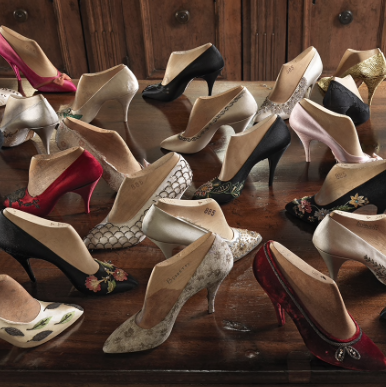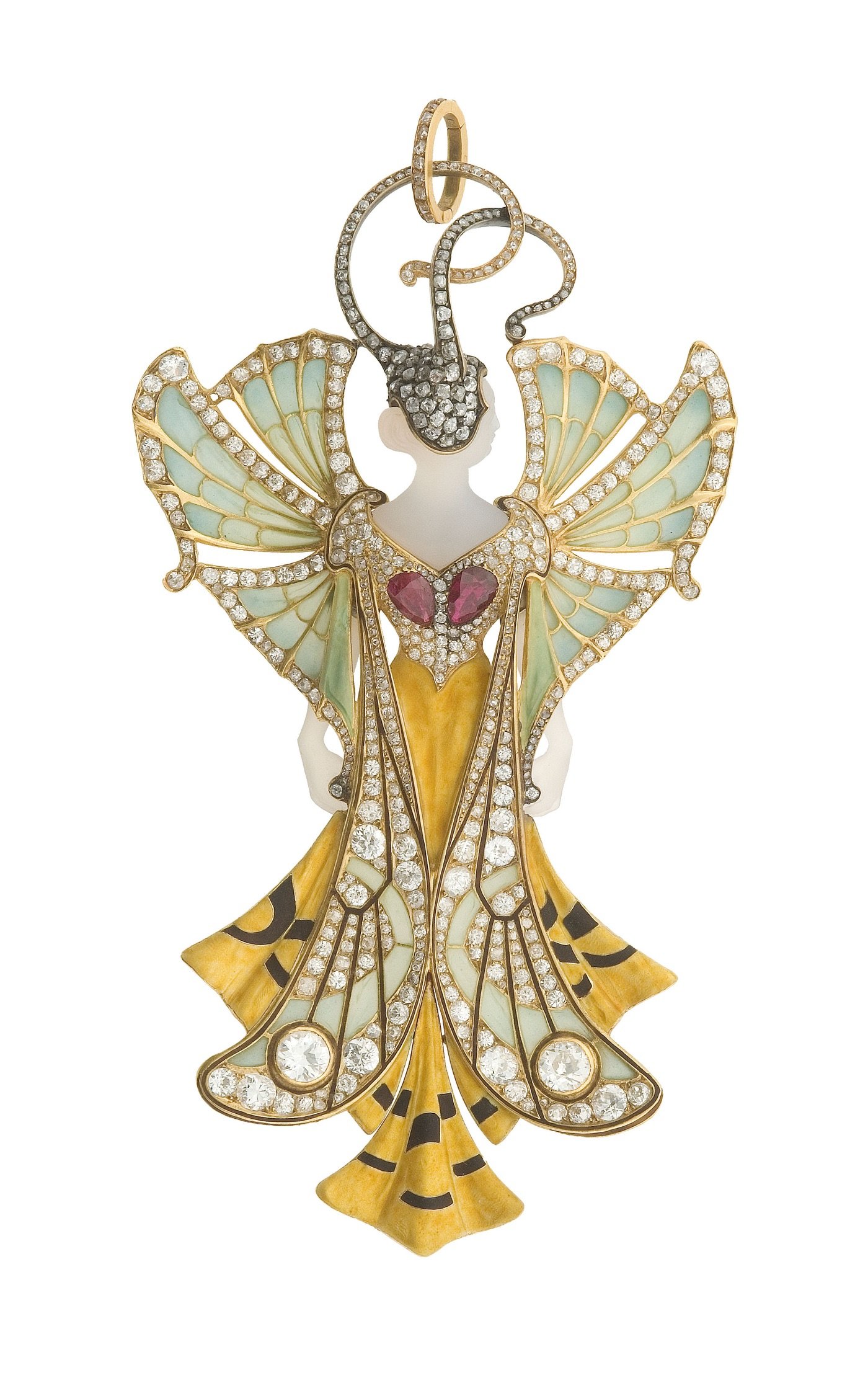Not Your Typical Museums
The mere mention of Art conjures up images of paintings, sculptures and ceramics. Rarely, if ever, do fashion, furniture, photographs, posters and such considered conversation pieces. They are often under-appreciated and under-rated since many do not associate them as works of art. We beg to disagree. We think that it’s about time to include fashion and decorative art museums in your travel itinerary for they are worth it. They are rich in culture, history and human-interest stories. Here are a few such museums we picked to add some spark to your holiday.
Ferragamo Museo, Florence
The Ferragamo Museo is dedicated to all things Salvatore Ferragamo. It has over 10,000 shoes created by Ferragamo himself from 1920 until his death in 1970. Every year a different theme of research is selected, starting from founder’s experiences, the history of his life, his creations, his customers and the values in which he believed. It allows us to examine the Ferragamo world in a transversal way combining it with other areas such as art, architecture, design, economic and social history and philosophy.
Located in the medieval basement of the historic Palazzo Spini Feroni in Florence, the Ferragamo family founded the museum in May 1995 to acquaint an international audience with the artistic qualities of Salvatore Ferragamo and the role he played in the history of footwear and international fashion. Location: Palazzo Spini Feroni, Piazza Santa Trinita 5/R, 50123 Florence, Italy. (Images: Ferragamo Museo)
Wooden lasts made by Salvatore Ferragamo for some of his most famous customers
Some Ferragamo evening shoes models from the 1950s
Gucci Garden, Florence
Formerly known as Gucci Museo, the Gucci Garden tells the story of the Italian fashion and leather goods manufacturer, from its early start in the city of Florence to the global biggest-selling Italian brand that it is today. The space features a store with one-of-a-kind items, the Gucci Osteria da Massimo Bottura (a restaurant by three-Michelin-star chef) and the Gucci Garden Galleria exhibition rooms.
Divided into a series of themed rooms, the Gucci Garden Galleria narrates the House’s new vision while celebrating the archives including memorabilia, old advertising campaigns, artisans’ images, retro objects. It also includes a small, red-velvet tented cinema auditorium.
The ‘Paraphernalia’ room that’s dedicated to signature codes and symbols that define Gucci’s identity. The‘Cosmorama’ room reveals the historical jet-set customers of Gucci and the evolution of the Crest. The gallery continues on the second floor with ‘De Rerum Natura’, two rooms that recall natural history museums and explore Alessandro Michele’s curiosity for animals and gardens—a vital part of the new Gucci narrative. The sensory journey ends with ‘Ephemera’, an environment where the gaze of the present composes landscapes of objects, videos and memorabilia that retrace the history of the House. Location: Piazza della Signoria, 10, 50122 Firenze FI, Italy. (Images: Gucci Garden)
Gucci Garden store features one-of-a-kind items
Gucci Garden De Rerum Natura explores Alessandro Michele’s curiosity for animals and gardens
The Palais Galliera, Paris
Palais Galliera has been a permanent museum dedicated to fashion since 1977. It preserves some of the richest collections in the world – some estimared nearly 200,000 works (clothing, accessories, photographs, drawings) that reflect the codes of clothing in France from the 18th century to the present day. Among the garments were those owned by Marie Antoinette, the largest clothing collection from the Age of Enlightenment, that dress from Breakfast at Tiffany’s. Location: 10 avenue Pierre 1er de Serbie, Paris 16e, 75116 Paris. (Images: The Palais Galliera)
Palais Galliera. Openwork metal basket / bag from 1794
Palais Galliera. Tea-Gown circa 1995, creation by Jean-Philippe Worth) both a reception dress and a private outfit worn by the Countess Greffulhe
The Museum of Decorative Arts, Paris
From ancient Chinese ceramics to Alexander McQueen evening dresses, the Musée des Arts décoratifs takes you through 5,000 years of human creativity.
Founded in 1905 in a wing of the Marsan du Palais of the Louvre, the Museum of Decorative Arts houses a monumental collection of decorative arts and design pieces. It houses and displays furniture, interior design, altarpieces, religious paintings, objets d'arts, tapestries, wallpaper, ceramics and glassware, plus toys from the Middle Ages to the present day.
Its archive of over 150,000 fashion pieces has been donated by the likes of Paul Poiret, Madeleine Vionnet, Elsa Schiaparelli, Cristóbal Balenciaga, Christian Dior and Christian Lacroix dating from the 8th century to the modern day. Location: 107 Rue de Rivoli, 75001 Paris, France (Images: Musée des Arts décoratifs)
Museum of Decorative Art. Sylvia pendant, 1900 (photo by Jean Tholance)
Museum of Decorative Art. Flamme ensemble, Paul Poirter, 1911
Victoria & Albert Museum, London
The Victoria and Albert Museum in London is the world's largest museum of applied arts, decorative arts and design, housing a permanent collection of over 2.27 million objects. It was founded in 1852 and named after Queen Victoria and Prince Albert.
V&A’s fashion collection spans five centuries, the largest and most comprehensive collection in Britain containing over 14,000 outfits plus accessories, mainly dating from 1600 to the present. One of the first significant gifts of the costume came in 1913 when the V&A received the Talbot Hughes collection of 1,442 costumes and items as a gift from Harrods following its display at the nearby department store.
The V&A covers 12.5 acres and 145 galleries. Its collection spans 5000 years of art, from ancient times to the present day, from the cultures of Europe, North America, Asia and North Africa. Its ceramics, glass, textiles, costumes, silver, ironwork, jewellery, furniture, medieval objects, sculpture, prints and printmaking, drawings and photographs are among the largest and most comprehensive in the world. Location: Cromwell Rd, London SW7 2RL, United Kingdom. (Images: Victoria and Albert Museum)
Victoria & Albert Museum. Platform shoes designed by Vivienne Westwood, 1993, England
Victoria & Albert Museum. ‘Thriving in Our Outrage Collection’ by Harris Reed
Simone Handbag Museum, Seoul
Opened in July 2012, this museum is dedicated to handbags. Some 300 bags are on display, dating from 1550 to the present day, in the Simone Handbag Museum in Seoul, South Korea. The focus is on fashionable western handbags, created for women to carry, convey and safeguard small personal items. Exhibits include the latest ʻItʼ bags of the 21st century and rare specimens that date back to the 1500s. Most of the handbags are European in origin, with some contemporary bags from the United States.
Located in Seoul’s Gangnam district, it is housed in the 10-storey Bagstage building which resembles a handbag. Location: 536-17 Sinsa-dong, Gangnam-gu, Seoul, South Korea. (Images: Simone Handbag Museum)
Simone Handbag Museum. Exhibits include the latest ʻItʼ bags of the 21st century and rare specimens from bygone eras
Simone Handbag Museum. Some 300 bags are on display, dating from 1550
Kyoto Costume Institute, Kyoto, Japan
The Kyoto Costume Institute’s collection currently ranges from the 17th century to the present day, with holdings of 13,000 items of clothing and 20,000 documents. The institute has received donations from some of today's top designers and fashion houses such as Chanel, Christian Dior, Louis Vuitton and was presented with a gift of approximately 1,000 sets of clothing from Comme des Garçons.
KCI systematically collects and preserves outstanding examples of western clothing through the centuries, as well as the documents and other items viewed within the context of human culture, clothing and other related documents from past eras. Location: 103, Shichi-jo Goshonouchi Minamimachi, Shimogyo-ku, Kyoto, 600-8864, Japan (Images: KCI)
Fashion In Colors © The Kyoto Costume Institute (photo by Naoya Hatakeyama)
© The Kyoto Costume Institute
Revolution in Fashion, 1715-1815 © The Kyoto Costume Institute, (photo by Naoya Hatakeyama)
Debbie | ws

















